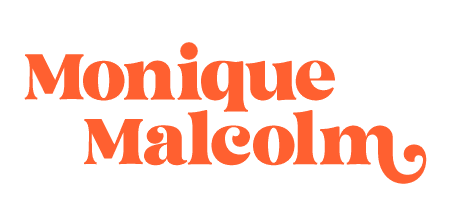
One mistake that many creatives are making is thinking that their blog is their business model. I get plenty of emails from people asking about how to start a blog but very few ask me how to create or sell an actual product or service. In this episode, I’m breaking down the difference between a blog, a brand, and a business model + which one you should be focused on.
Blog – Your Platform
It is not a biz model. For most biz it is not the money maker, it is a discovery tool. Similar to a billboard on the interstate, it’s goal is to notify potential ideal clients of what it has to offer.
For example, if you need to fill up on gas seeing a billboard stating there’s a gas station off of the next exit on the left is useful. Anyone who needs gas will probably stop.
Brand – The Personality of Your Business
I liked Allan Dib’s simplified definition of a brand – “The personality of your brand”.
Brands like Apple, Uber, and Google have become powerful household names. You immediately conjure up certain images when you hear their names. We have begun to associate specific actions with the brand.
Example – Telling someone to Google the answer. Google is a brand name, not a verb.
Biz Model – Your Business’s Plan For Making Money
A business model explains how your business plans to make money. It identifies the products or services that you will sell, the audience you’re targeting, and the costs associated with running your business.
Breakdown Of A Business Model Canvas
A business model canvas is a 1-page tool that simply communicates a business idea. It’s a quick way to test the viability of an idea.
A business model canvas consists of 9 sections which provides a high level overview of the business and works through the fundamental elements.
Customer Segments: Who you help? Your audience. Keep in mind your audience can consist of multiple segments. These are the people you are creating value for.
Value Propositions: What you do? The exchange of value between your business and your customers. You provide value to your customer by solving a problem for them and they give you money in return. #winwin
Think of this as your unique solution to solving your customers problem. It’s your strategic advantage. This is your creative businesses secret sauce.
Channels: How you reach your customers? The different places that your customers come in contact with your business.
A few examples are: social media, public speaking, email marketing, and advertising.
Customer Relationships: How you interact with your customers? These are the ways that you connect and build relationships with your customers.
A few examples are: online, events, phone, and face-to-face.
Revenue Streams: How you make money? This is how your business converts its solution to your customer’s problem into financial gain. Basically, the ways that you plan to generate money.
Example – My dad is a truck driver. He gets paid to haul loads of freight across the country. His customer is the food supplier. Their pain is that they need to get their goods to grocery stores across the country quickly to avoid spoilage. My dad has turned the food suppliers pain into financial gain by charging them a fee to move their freight.
Possible Revenue Models:
- Fee for service
- Subscription
- Freemium
- Pay per product (ecommerce)
Key Activities: How you do it? The activities that are required to deliver on your value proposition.
Example – I’m a podcaster some of the key activities that I have to stay on top of our content creation (like contacting guests and interviewing them) and product creation (like idea development).
Key Resources: What do you need? The resources that your business needs to complete the important action/ activities of your business.
Example – A few key resources that I need to produce this podcast: internet, podcast hosting, electricity. I could cut corners but without those 3 things I could not put out a show.
Key Partnerships: Who will help you? A list of companies/suppliers/people you may need to deliver value to your customer. If your company can’t achieve it’s value proposition alone these are the partnerships that you’d rely on.
Example – My planner company KCTS sells the Visionary Journal. It is my original design but I don’t make the planners. I have partnered with a company to manufacture the planner. They are a key partner for me.
Cost Structure: What will it cost? The financial cost of running your business. What are the major costs that your business will incur? How are those costs linked to revenue?
